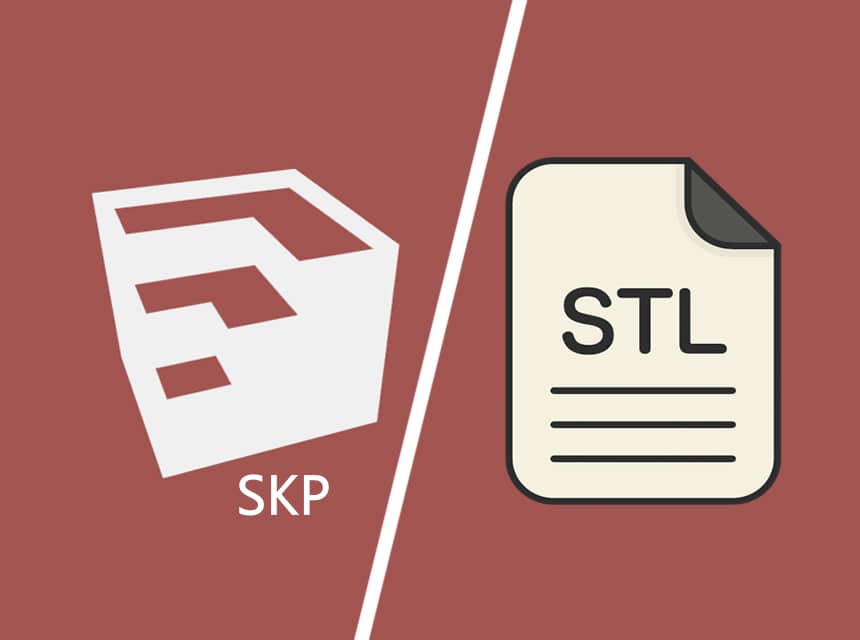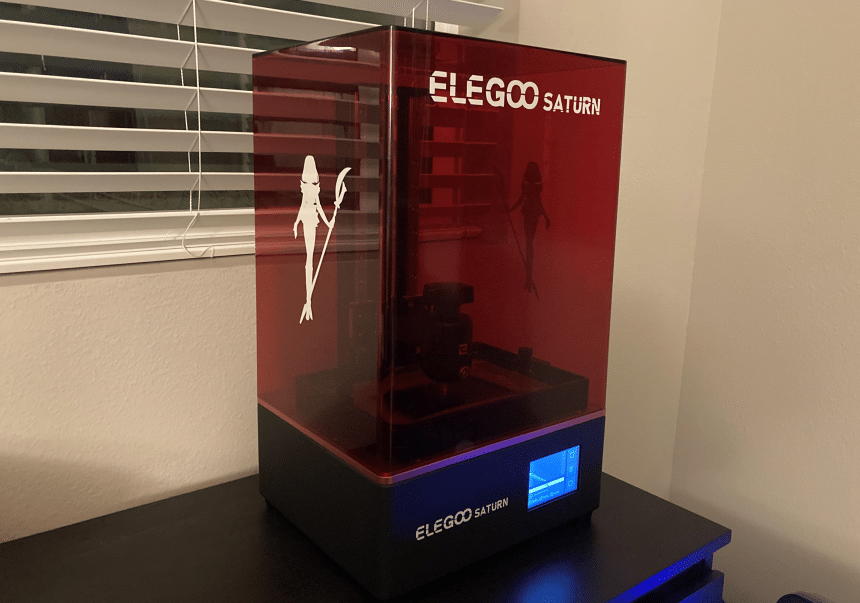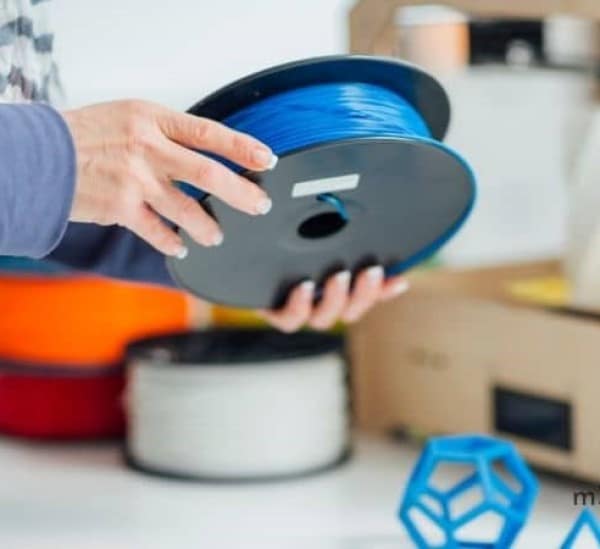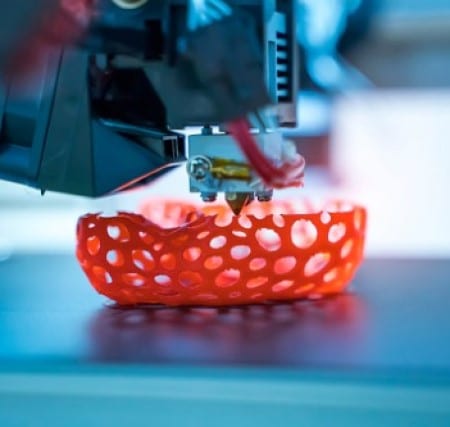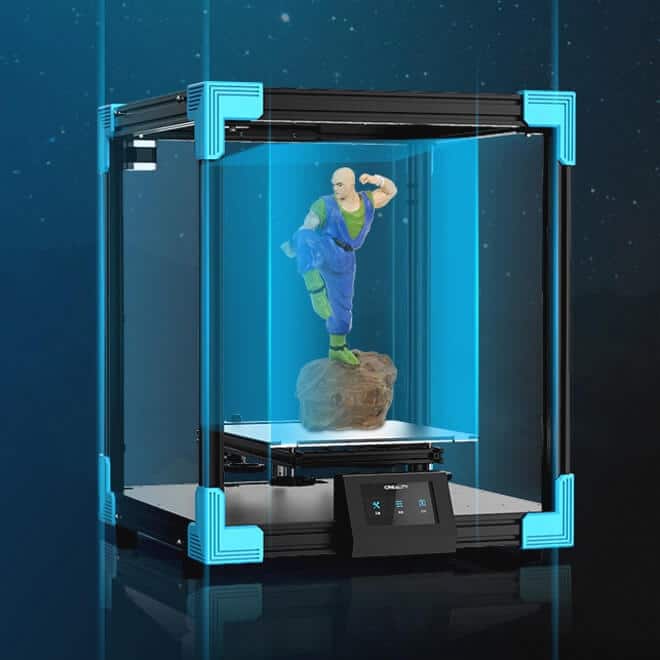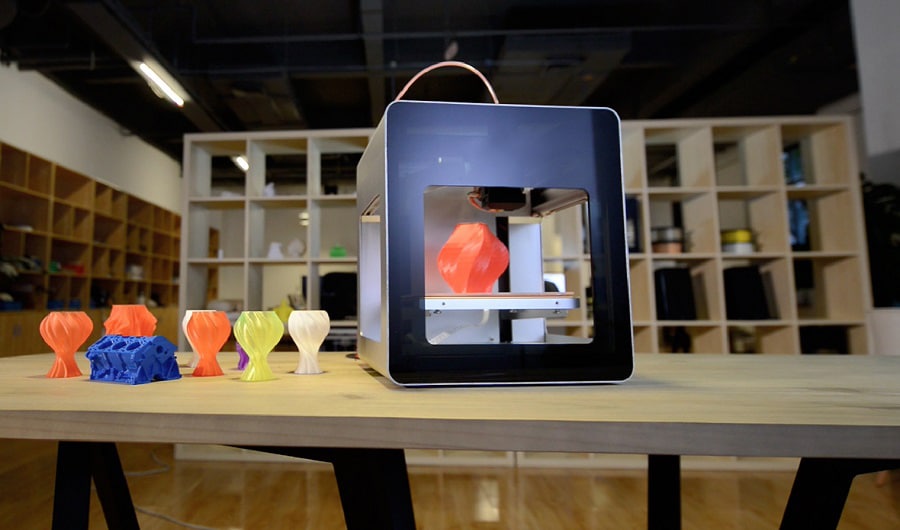

3D printing Trusted Source 3D printing - Wikipedia 3D printing, or additive manufacturing, is the construction of a three-dimensional object from a CAD model or a digital 3D model. The term “3D printing” can refer to a variety of processes in which material is deposited, joined or solidified under computer control to create a three-dimensional object, with material being added together (such as plastics, liquids or powder grains being fused together), typically layer by layer. en.wikipedia.org has become very popular across a lot of industries. PLA and ABS are the two most popular materials used in this type of printing. What are the cons and pros of each one, and how do they compare to each other? In this post, we consider each one’s advantages and help you choose the best material for whatever project you want to handle.
In this PLA vs ABS post, we will consider what each of them is. We also will discuss the properties of each and the best applications. Later, we provide a comprehensive table that compares each of these materials.
Read on to know the best material for your next project.
The first thing that we will do in this post is to define what PLA is. PLA is an acronym for Polylactic acid. It is a very popular filament that is used in 3d printing. One of the defining properties of PLA is that it is made of organic substances. Therefore it is pretty sustainable and easy to make. This is likely why it is so affordable, especially when compared to the other materials used in 3d printing.
The appearance is opaque and glossy, so it is often found as the material of choice for detailed and complex prints. Due to all its factors, it is considered to be the best material for anyone new to 3D printing.
If you are creating a prototype or mockup of a building and similar stuff, then it is a great option. It is pretty flexible, and it can be used to create 3d structures with complex features.
This is a thermoplastic filament that is made from organic substances like corn starch. It is often considered to be a non-Newtonian pseudoplastic fluid. In real-life terms, it has a viscosity that changes depending on the amount of stress that it is put through. Therefore, one of its properties is that it is pretty flexible. The viscosity will decrease as you apply stress.
It is very popular in 3D printing and is widely accepted as one of the best. One of the best things about it is that it is made from renewable products. As it is pretty easy to use, most beginners prefer to start with it.
It is a semi-crystalline polymer with a lower melting temperature than ABS material. Therefore, when using this material, you don’t even need to use a heated printing bed. You also might not require the closed chamber.
This doesn’t mean that there aren’t drawbacks to the filament. Later in this post, we will consider some of the disadvantages.
PLA has good tensile strength and resistance to UV radiation. It also has low resistance to solvents. Overture has made a PLA filament that reviewers believe is one of the best of its type right now.
PLA can withstand temperatures of up to 50 degrees Celsius. This is not particularly impressive.
PLA can print at speed exceeding 60 mm/s.
This filament can be used for a wide variety of applications. It is a very adaptable material that offers plenty of advantages, which why it is not surprising that you find it in so many industries.
The filament is great for the environment, which works in its favor and means that it will continue to be used in 3D printing.
Here are some of the best applications of this material.
As this material is a good alternative to traditional food packaging materials, it is now commonly used for packaging food. It is especially good for this application because you can dispose of it quickly without endangering the environment.
It has also found a place in the automotive industry. Companies constantly seek ways to create environment-friendly vehicles, so having a material that is not harmful is a good thing. It is often used in plastic trim and plastic in vehicles.
There are loads of household appliances and stuff that have PLA material.
As we have discussed so far, this material is an excellent option. Here are some of the advantages of the material:
This is an overall great material. However, one major downside is the temperature resistance. Objects that you print with PLA can deform at temperatures higher than 50 degrees Celsius.
ABS is the other popular material used in 3d printing. ABS is an acronym for acrylonitrile butadiene styrene. As such, it comes as a thermoplastic material. One of the differences between this material and PLA is that it is more technical. Therefore, it is not a good fit for anyone that is just learning how to use a 3D printer and materials. You can check out some of the best 3D printer for ABS and determine which to use along with the filament.
It is not as flexible and this stiffness might be an issue for certain users. One benefit, though, is that it is pretty resistant to heat and damage. Because of this property, you will find this material used in creating end-user tools, moving mechanisms, and other creations that will have to undergo plenty of heat or impact.
It’s a pretty dope material and reviews show that Overture has some of the best ABS filament on the market.
ABS filament comes in 1.75mm or 2.85mm diameters and can be found in different colors. Therefore, it holds plenty of interest for industries that are looking to print parts using 3D printing.
The physical appearance is good, as this is an opaque material with a smooth and shiny surface.
One of the properties that make it a top choice is that it comes with high-temperature resistance. You can use this filament in temperatures up to 80 degrees Celsius. Therefore, you can have it used in tough conditions that require a thermally resistant material.
ABS is a strong material that is resistant to impact, stiff, and very durable. It is one of the most durable materials for 3D printing. It retains its strength even when the temperature is very low. This strength also extends to inside water. It will remain resistant to water better than other materials for 3D.
Another property of this material is that it offers a high melting temperature. It offers a higher temperature resistance than the PLA material. It is an amorphous material, which means that it can even have a glass transition at certain temperatures.
ABS filament is one of the best for professional and commercial applications due to its several excellent properties. Here are some of the best applications of ABS that we have found:
ABS filament is pretty tough and durable, so it is used in the toy industry to make LEGOs and other plastic toys. It is perfect for creating parts that need to survive high temperatures.
Its properties are not brittle and can be processed to give off a beautiful shine. If you are looking to print toys, then this material comes in pretty useful.
This material has found application in the sports industry as it is used in making sports equipment. You will find it used for masks, golf clubs, studs, and other sport-related equipment. This application is largely due to its ability to survive high temperatures and its impressive durability.
As with PLA, ABS is also used in the automotive industry for making certain parts of vehicles. It is used to make prototypes, accessories, brake parts, and so on. In a short time, this material can be used for designing and printing.
ABS has also found application in the medical world as some medical equipment are now made using it. It is safe and durable, which makes it a good choice for printing medical equipment.
There are several benefits to using this material. Here are some of the biggest benefits:
There are also some reasons why you might decide not to use this material. They are:
Well, both filaments come with unique advantages.
ABS is stronger than PLA, although it warps and shrinks worse. ABS filament is also great because it extrudes thicker – which makes for quicker projects.
As for the pens, many experts prefer PLA filament pens, especially for wearable projects. You can check out the best 3D pens here.
Here is a table detailing the features of the two.
| PLA | ABS | |
| Applications | Lesser applications | Wider applications |
| Ease of use | Easy to use | Harder to use |
| Accuracy | Accurate | Less Accuracy |
| Strength | Strong | Stronger |
| Flexibility | More Flexible | Less Flexibility |
| Melting temperature | 50 degrees Celsius | 80 degrees Celsius |
| Surface finish | Requires Greater Care | Better Surface Finish |
| Price | Cheap | Cheaper |
The PLA vs ABS argument is one that will continue as there is no definitive winner. So which should you choose for your next project? Well, when it comes to choosing, the final decision depends on what you want to print. If you are just starting out and just want to print without plenty of care for functionality, then PLA is your best bet.
However, if you want a tough material that offers better functionality, the ABS is the better choice. So determine the type of project you are embarking on and choose the best material for the job. Also, for the best result, ensure that you have the best dual extruder 3D printer.
